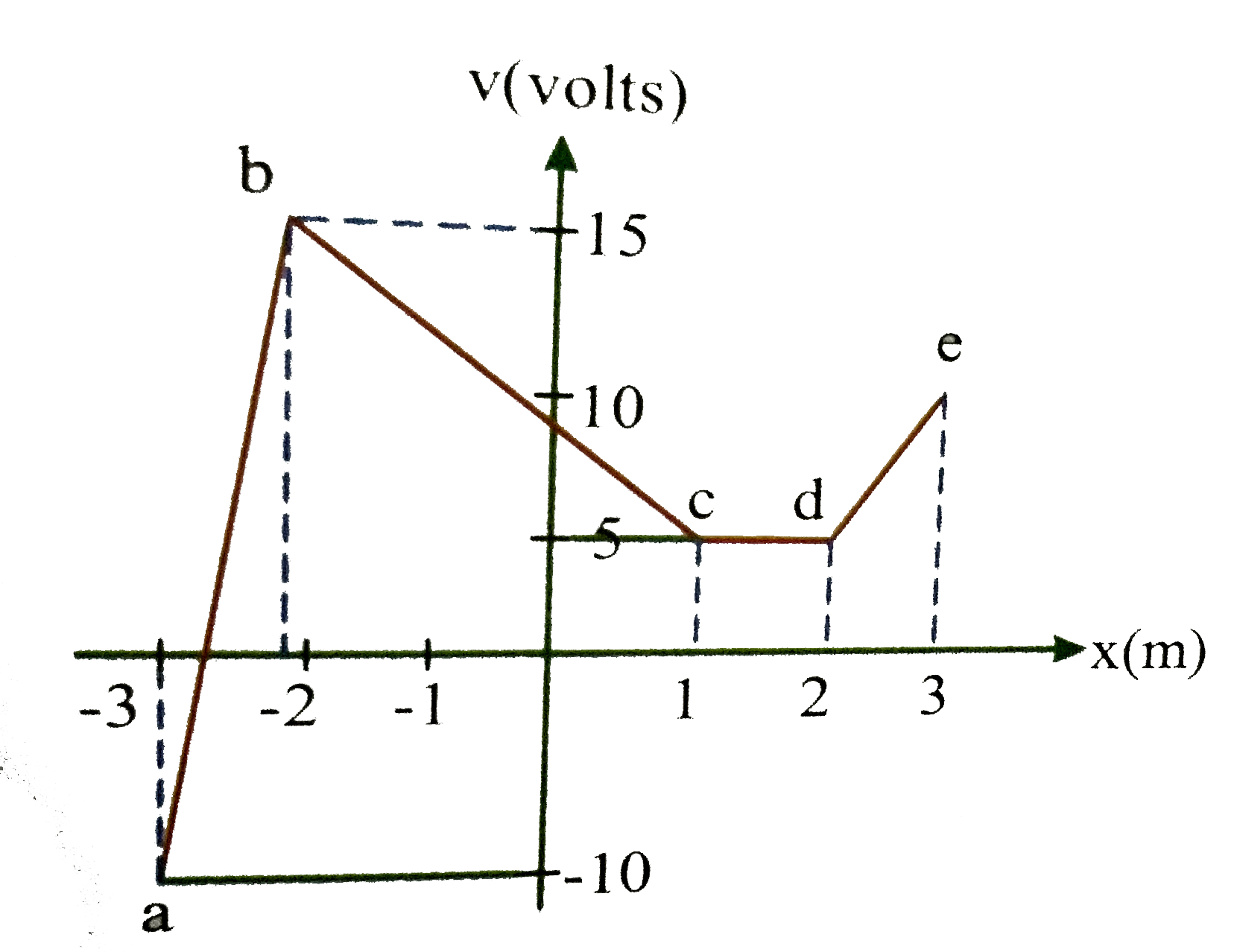 Suppose electric potential varies along the x-axis as shown in the above figure the potential doesnot vary in yorz direction of the intervals shown (ignore the behaviour at the end points of the intervals) the field Ex has a maximum absolute value FB_(1)Vm−1 in the region FB_(2) its value in the region cd is FB_(3)Vm−1 then
Suppose electric potential varies along the x-axis as shown in the above figure the potential doesnot vary in yorz direction of the intervals shown (ignore the behaviour at the end points of the intervals) the field Ex has a maximum absolute value FB_(1)Vm−1 in the region FB_(2) its value in the region cd is FB_(3)Vm−1 then
The plot Exvsx is
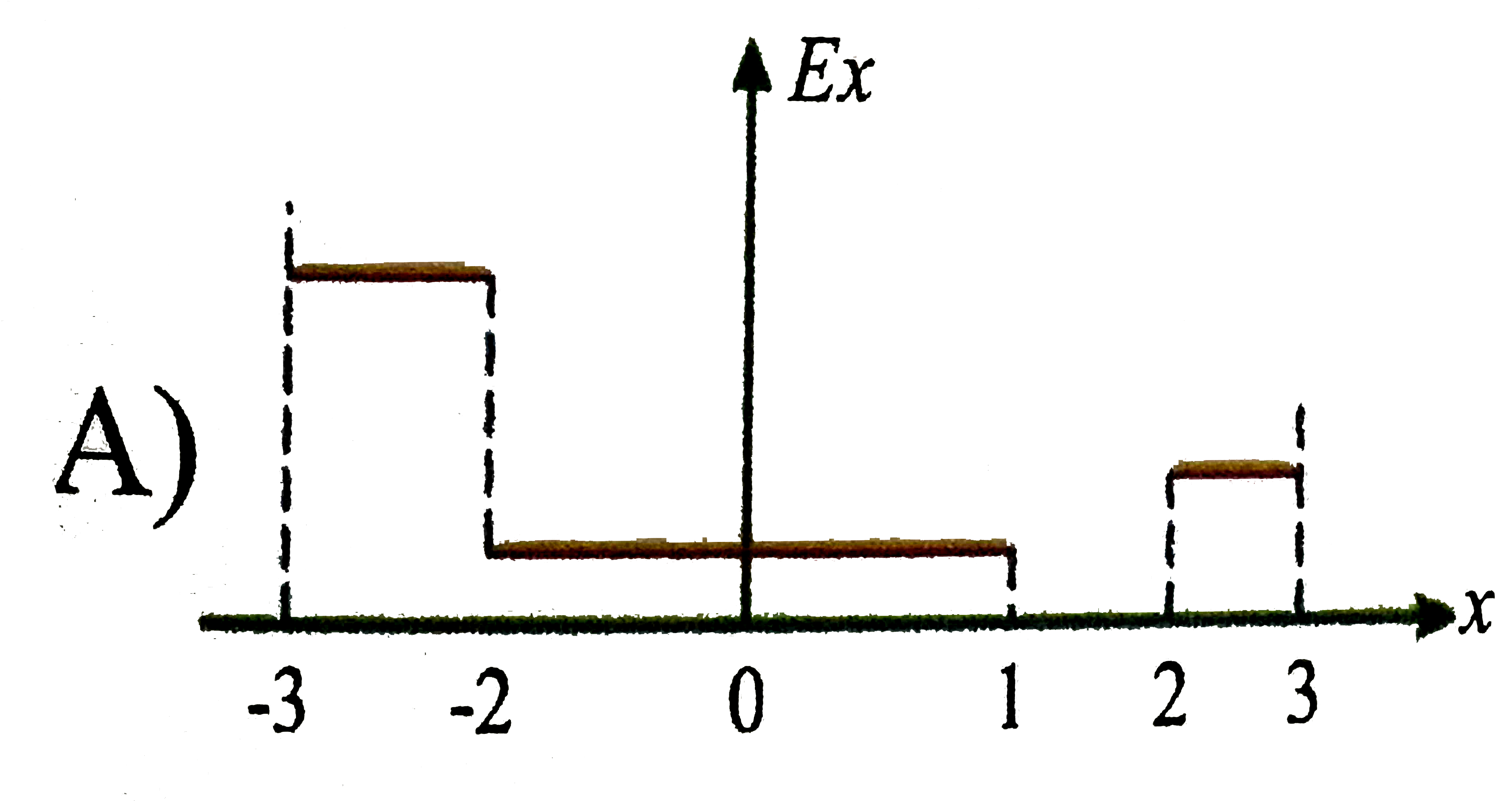

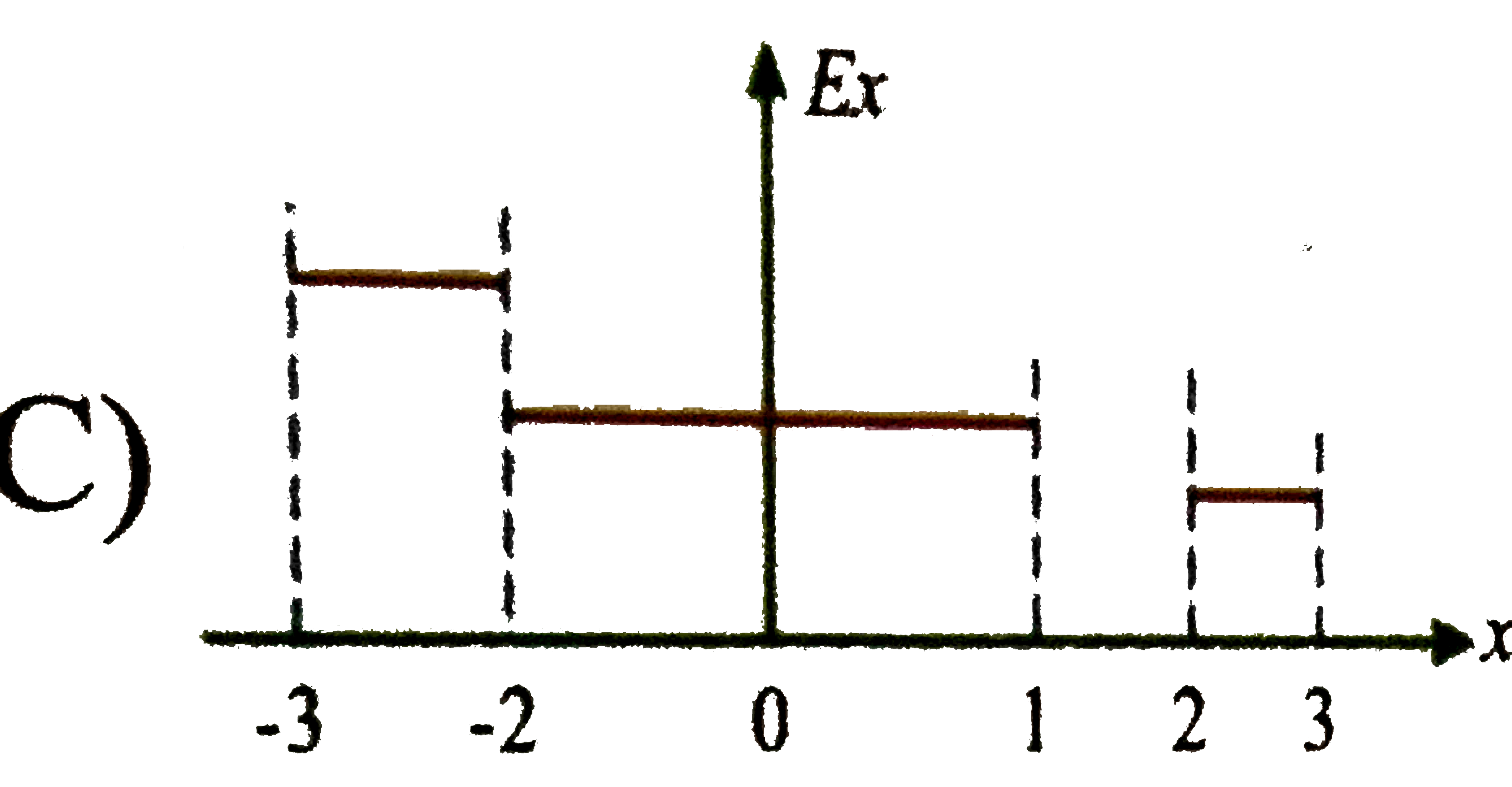

The correct Answer is:D
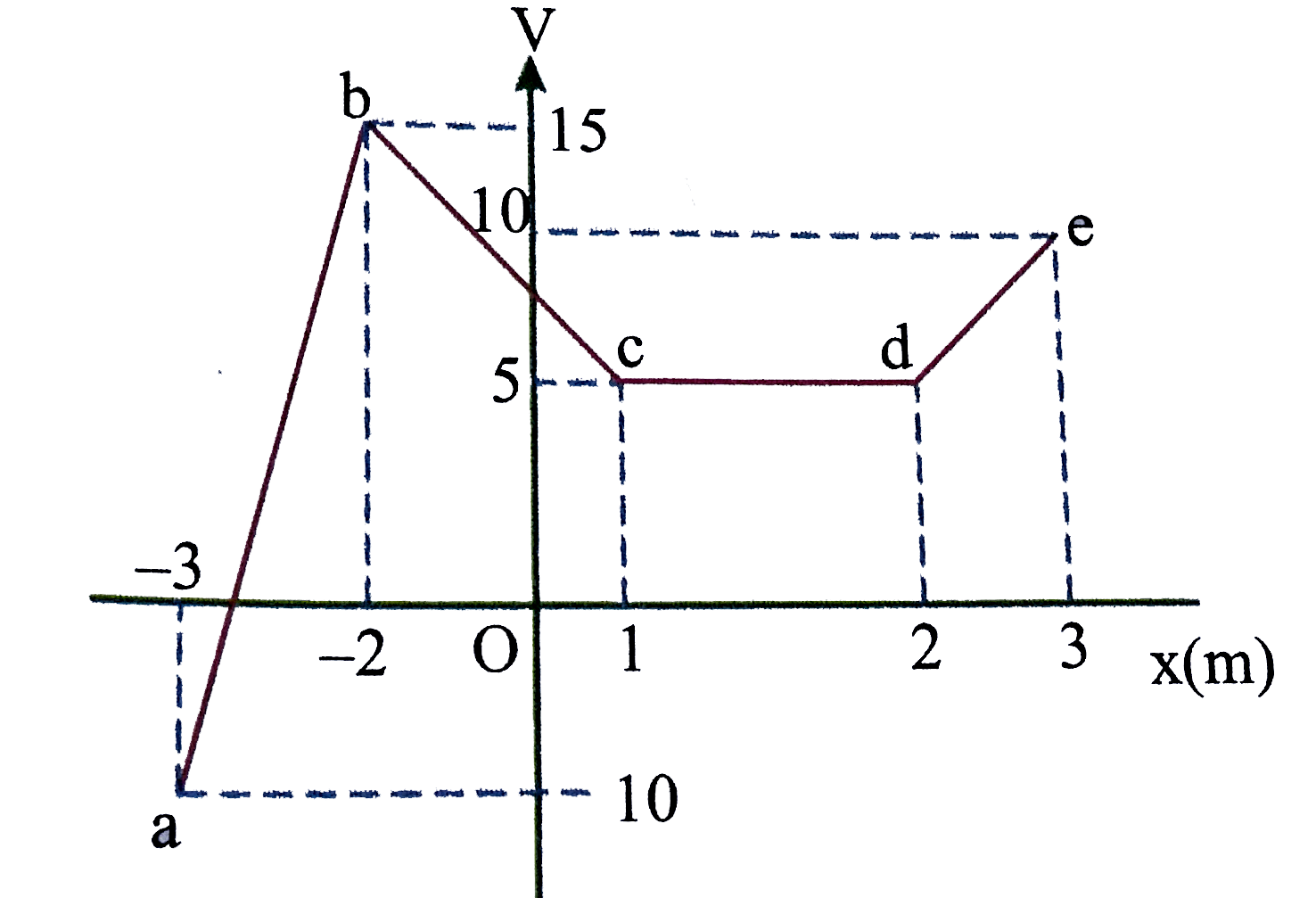
(Ex)maxValue 'FB1' in the region FB2
Ex=value of cdis FB3Vm−1
E=−dVdx⇒Eab=−(251)=−25
Ebe=(5−151+2)=103Ecd=0
Ede=−(15−53−2)=−10
⇒(Ex)Max=25V/m−1⇒FB2 is ab
Taking the values of Eab,Ebc,Ecd,Ede, .The plot of Ex Vsx will be as shown in D option.
For a→b part V=25x+65
∴ when V=0⇒x=−6525=−135m
Topper's Solved these Questions
- BOOK - NARAYNACHAPTER - ELECTROSTATICS AND GAUSS LAWEXERCISE - Passage V3videos
ELECTROSTATICS AND GAUSS LAW
- BOOK - NARAYNACHAPTER - ELECTROSTATICS AND GAUSS LAWEXERCISE - Passage VI3videos
ELECTROSTATICS AND GAUSS LAW
- BOOK - NARAYNACHAPTER - ELECTROSTATICS AND GAUSS LAWEXERCISE - Passage III3videos
ELECTROSTATICS AND GAUSS LAW
- BOOK - NARAYNACHAPTER - ELECTROSTATIC POTENTIAL AND CAPACITANCEEXERCISE - ADDITIONAL PROBLEMS14videos
ELECTROSTATIC POTENTIAL AND CAPACITANCE
- BOOK - NARAYNACHAPTER - EXPERIMENTAL PHYSICSEXERCISE - Comprehension type6videos
EXPERIMENTAL PHYSICS
Similar Questions
Verify LMVT for the following functions on the intervals shown against them and find the possible values of c :
f(x)=logx,x∈[1,e].View SolutionGravtational potential varies alolngl x-axis as shown in figure .
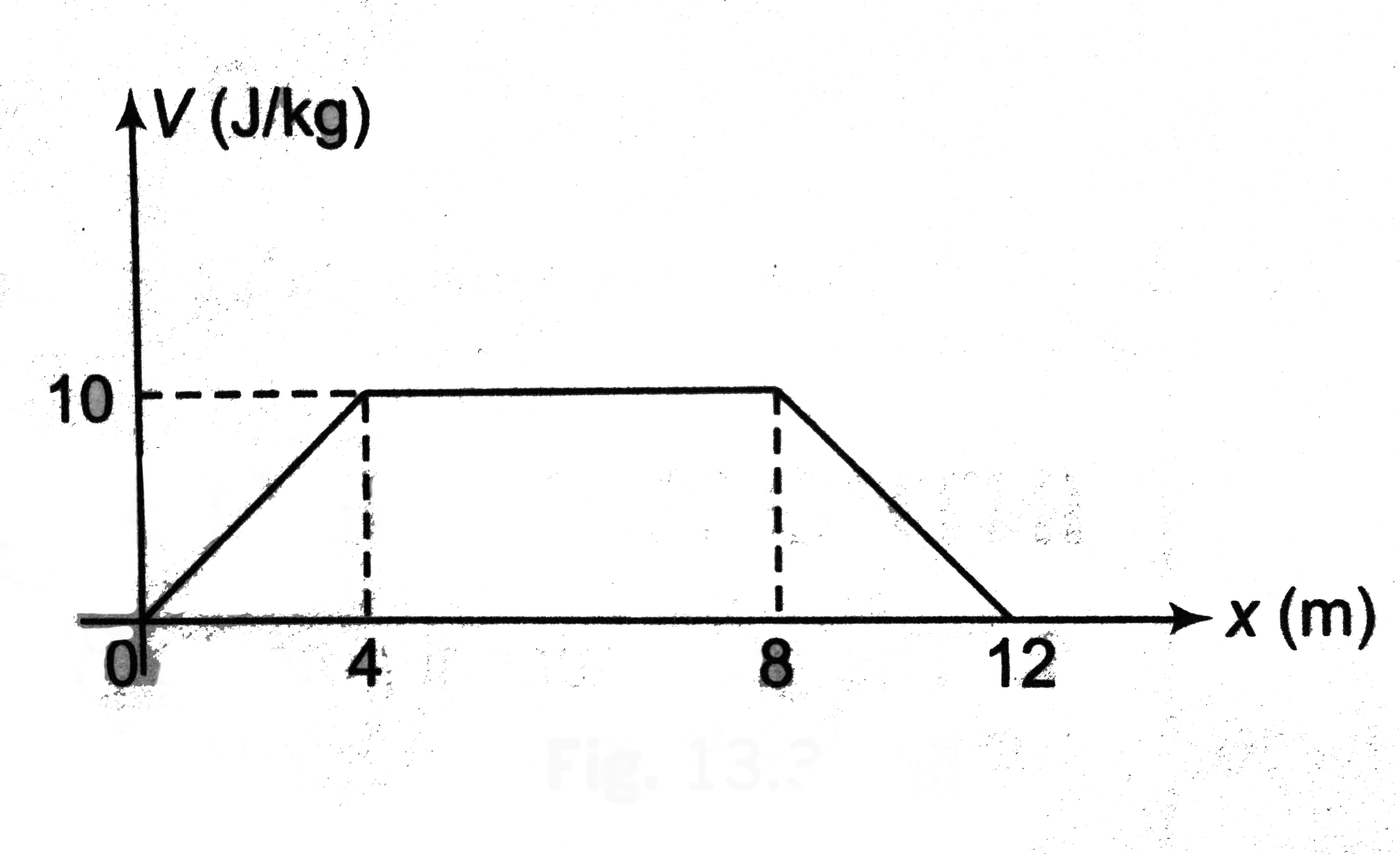
(a) Plot E versus x graph corresponding to given V−x graph.
(b) A mass of 2 kg is kept at x=3m. Find gravitational force on it.View Solution
Knowledge Check
- Question 1 - Select One
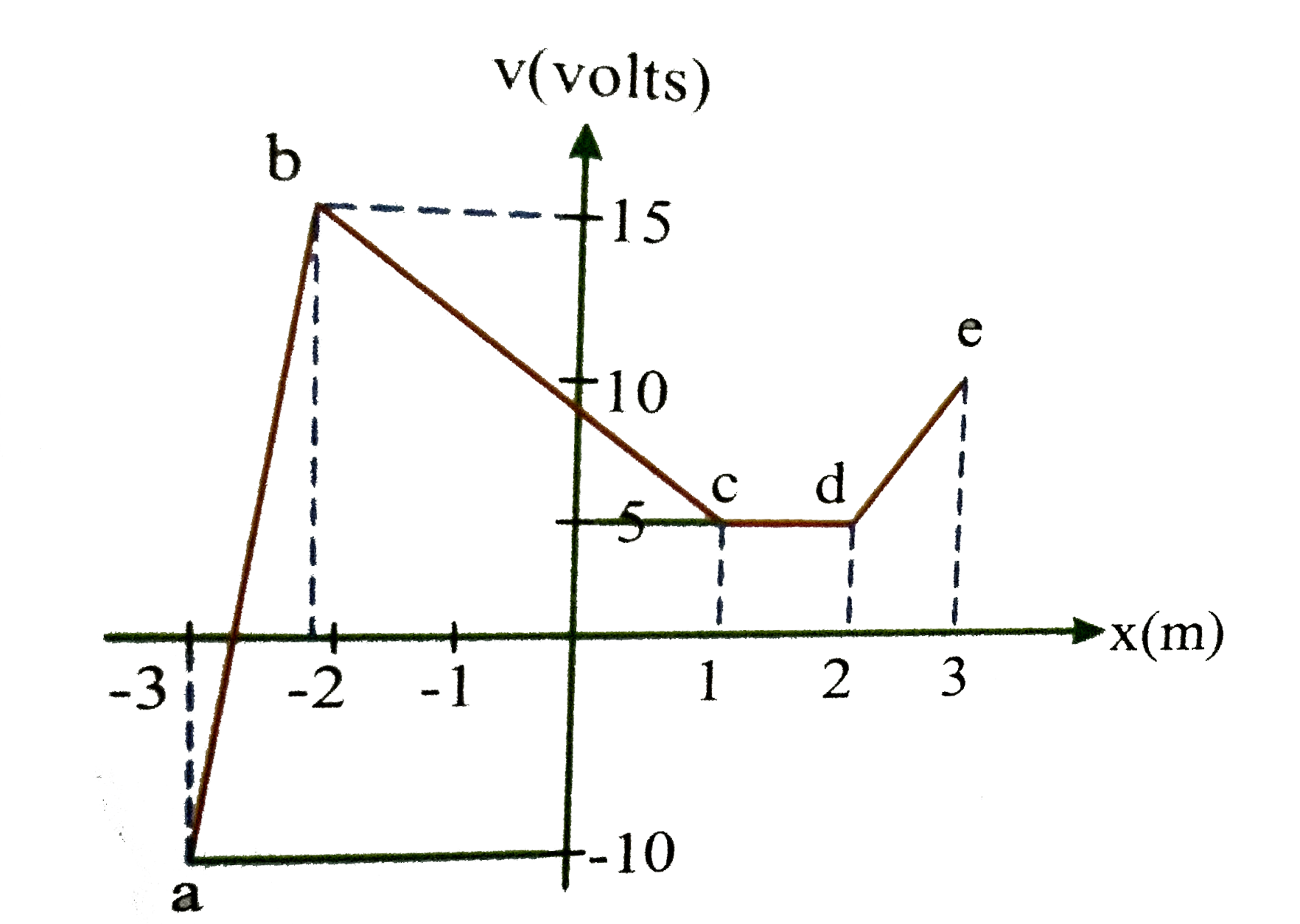 Suppose electric potential varies along the x−aξs as shown in the above figure the potential doesnot vary in yorz direction of the intervals shown (ignore the behaviour at the end points of the intervals) the field Ex has a maximum absolute value FB_(1)Vm−1 in the region FB_(2) its value in the region cd is FB_(3)Vm−1 then
Suppose electric potential varies along the x−aξs as shown in the above figure the potential doesnot vary in yorz direction of the intervals shown (ignore the behaviour at the end points of the intervals) the field Ex has a maximum absolute value FB_(1)Vm−1 in the region FB_(2) its value in the region cd is FB_(3)Vm−1 then
The region that fills FB_(2) isAabBdeCbcDdc - Question 2 - Select One
 Suppose electric potential varies along the x-axis as shown in the above figure the potential doesnot vary in yorz direction of the intervals shown (ignore the behaviour at the end points of the intervals) the field Ex has a maximum absolute value FB_(1)Vm−1 in the region FB_(2) its value in the region cd is FB_(3)Vm−1 then
Suppose electric potential varies along the x-axis as shown in the above figure the potential doesnot vary in yorz direction of the intervals shown (ignore the behaviour at the end points of the intervals) the field Ex has a maximum absolute value FB_(1)Vm−1 in the region FB_(2) its value in the region cd is FB_(3)Vm−1 then
The value that fills FB_(1) isA252B25C152D−50 - Question 3 - Select One
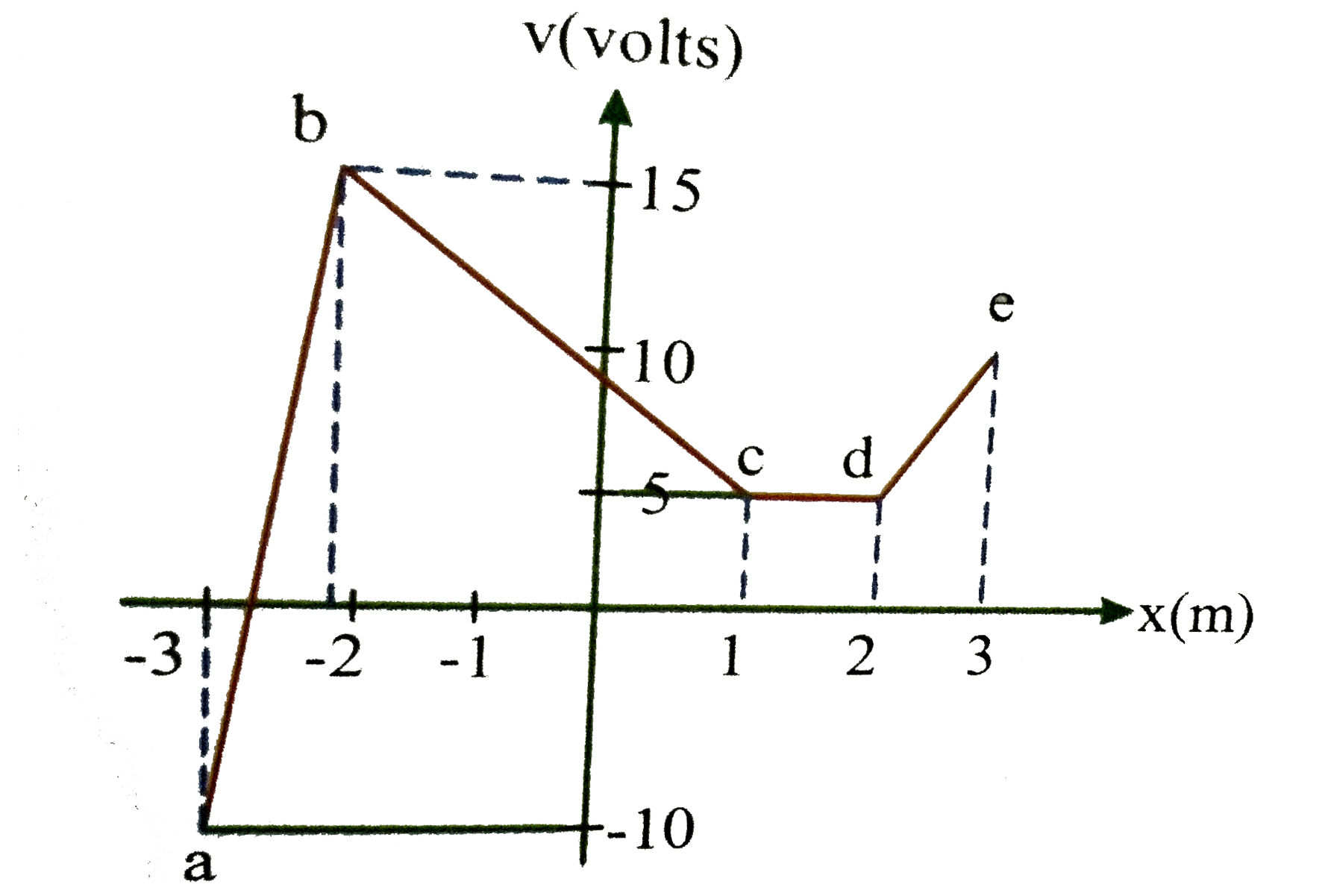 Suppose electric potential varies along the x-axis as shown in the above figure the potential doesnot vary in y or z direction of the intervals shown (ignore the behaviour at the end points of the intervals) the field Ex has a maximum absolute value FB1Vm−1 in the region FB_(2) its value in the region cd is FB_(3)Vm−1 then
Suppose electric potential varies along the x-axis as shown in the above figure the potential doesnot vary in y or z direction of the intervals shown (ignore the behaviour at the end points of the intervals) the field Ex has a maximum absolute value FB1Vm−1 in the region FB_(2) its value in the region cd is FB_(3)Vm−1 then
The value that fills FB_(3) isA1B2C3Dzero
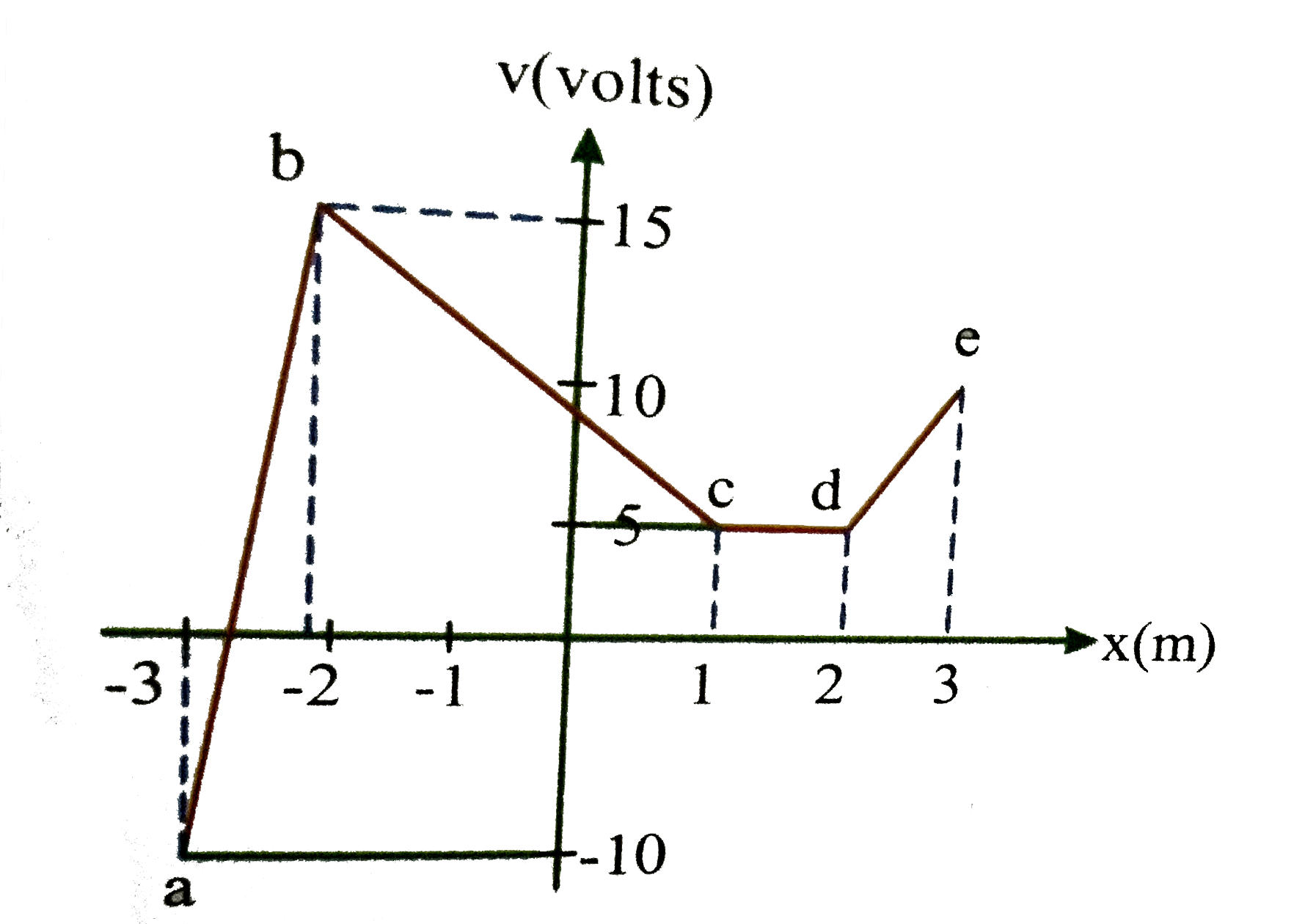 Suppose electric potential varies along the x-axis as shown in the above figure the potential doesnot vary in yorz direction of the intervals shown (ignore the behaviour at the end points of the intervals) the field Ex has a maximum absolute value FB_(1)Vm−1 in the region FB_(2) its value in the region cd is FB_(3)Vm−1 then
Suppose electric potential varies along the x-axis as shown in the above figure the potential doesnot vary in yorz direction of the intervals shown (ignore the behaviour at the end points of the intervals) the field Ex has a maximum absolute value FB_(1)Vm−1 in the region FB_(2) its value in the region cd is FB_(3)Vm−1 then
In the Vvsx curve ,the potential possesses a zero value atView SolutionIn an electric field region, the electric potential varies along the x-axis as shown in the graph. The x components of the electirc field in the regions for the intervals PQ and QR as market in the garph, in N/C, are respectively:
 View Solution
View SolutionThe electrical potential function for an electrical field directed parallel to the x - axis is shown in (Fig. 3.152).
 .
.
The magnitude of the electric field in the x - direction in the interval 4≤x≤8 isView SolutionThe variation of electric potential with distance from a fixed point is shown in figure. What is the value of electric field at x=2m -
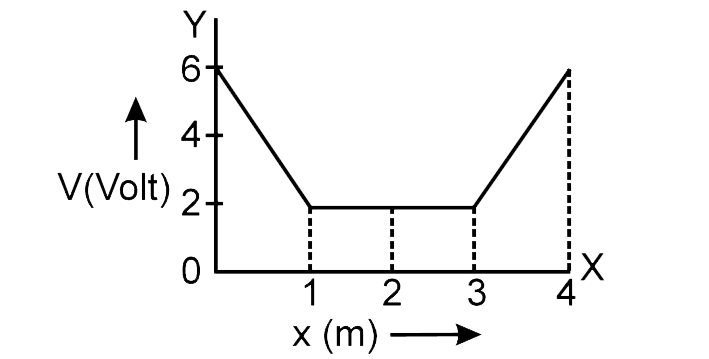 View Solution
View SolutionA potential energy curve U(x) is shown in the figure. What value must the mechanical energy Emec of the particle not exceed, if the particle is to be trapped within the region shown in graph?
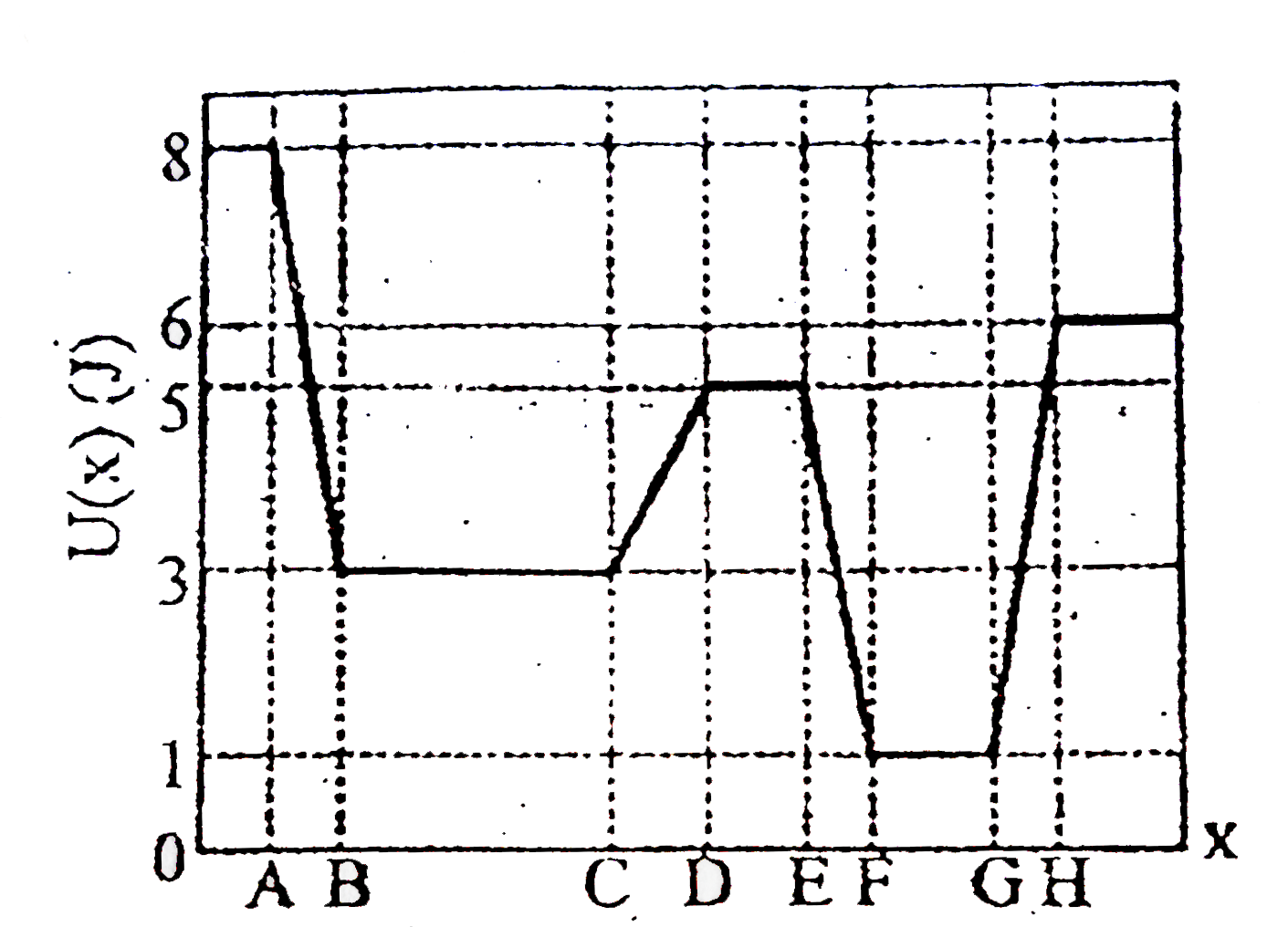 .View Solution
.View Solution

